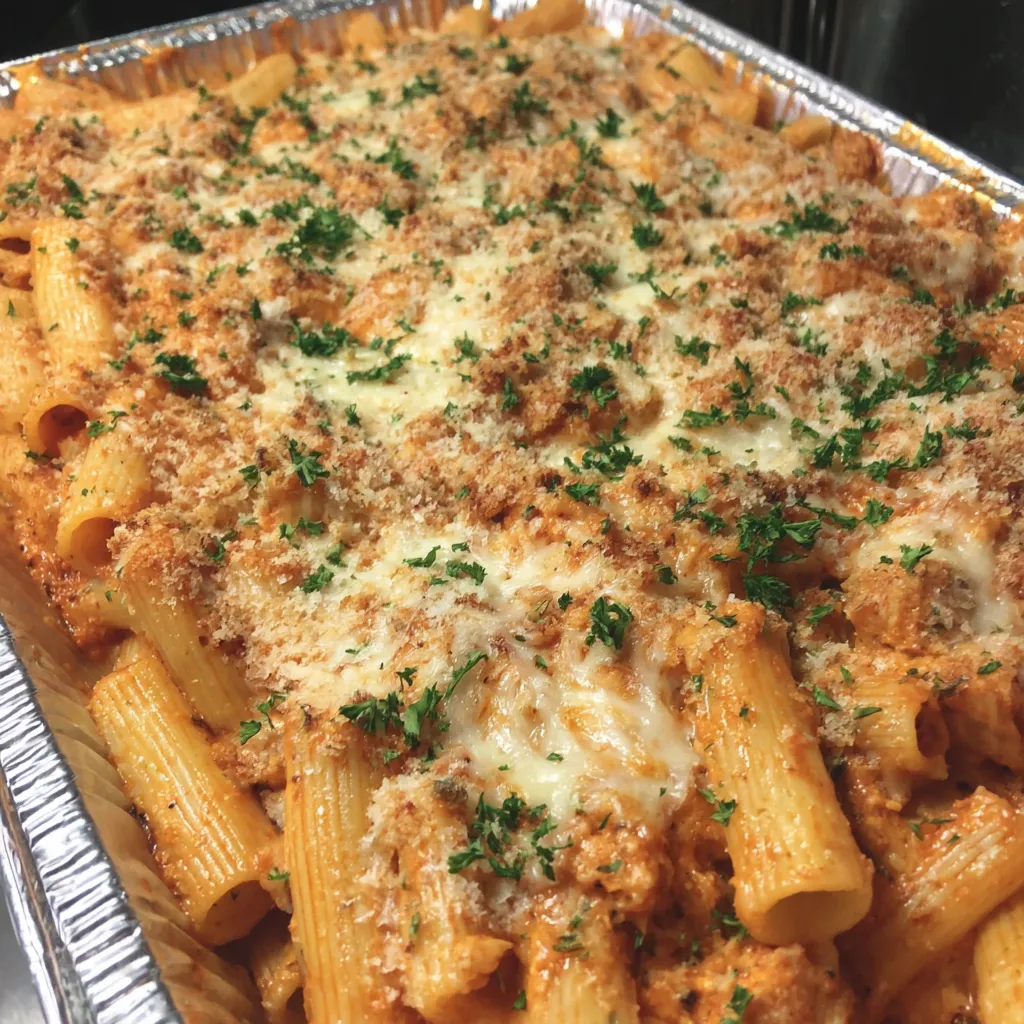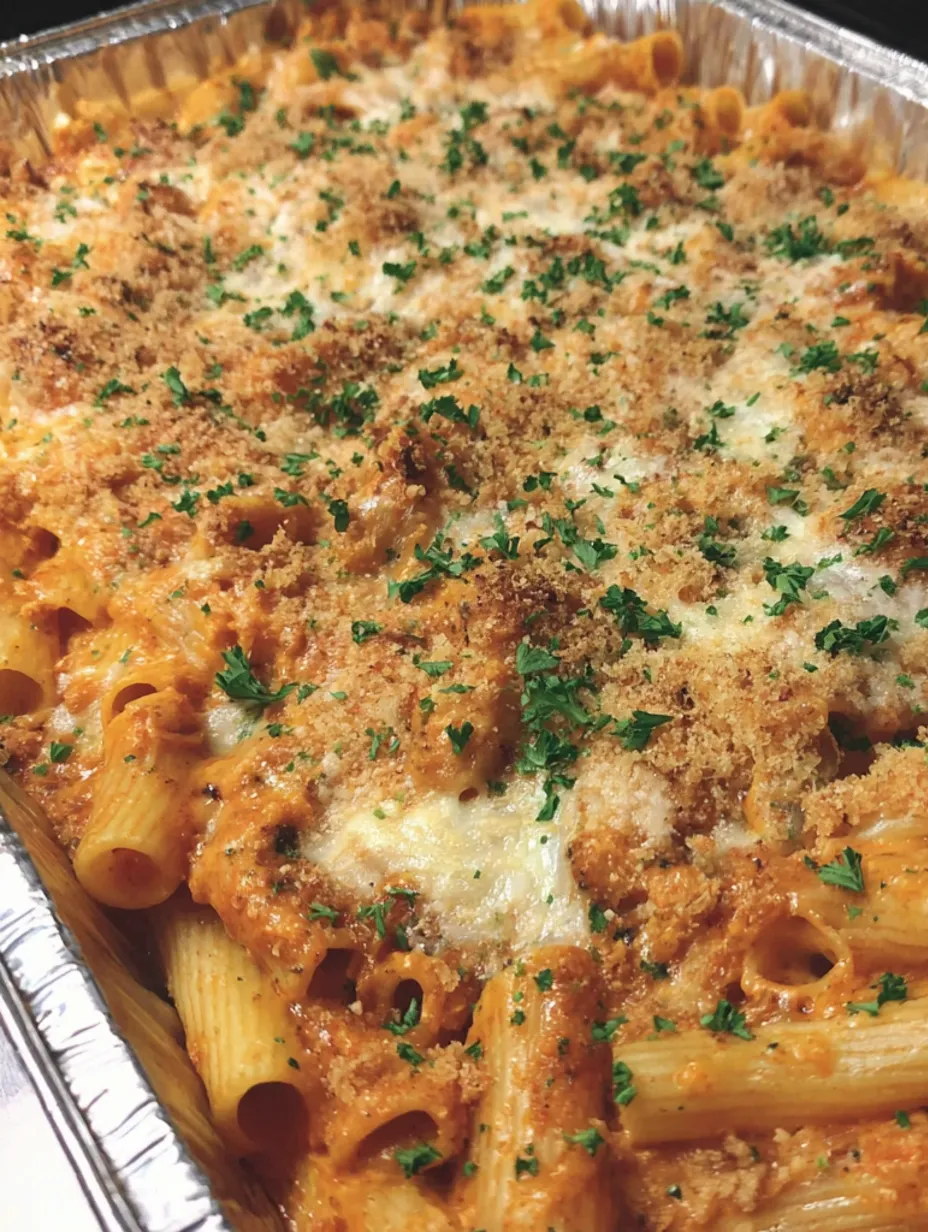 Bookmark
Bookmark
Pasta al forno brings together tender rigatoni with a combination of tomato and Alfredo sauces, layered with fontina, ricotta, and mozzarella for a creamy and rich texture. The dish is finished with a golden breadcrumb and cheese topping, creating a bubbly and savory casserole that is perfect for family gatherings and cozy dinners.
I first made this for friends during a chilly evening and everyone returned for seconds. It has become a favorite for potlucks and comforting nights at home.
Ingredients
- Rigatoni pasta: provides structure and absorbs the sauce well. Choose a sturdy brand for best results
- Tomato or marinara sauce: adds acidity and brightness. Look for sauces without added sugar
- Alfredo sauce: delivers creamy richness that balances the tomato base
- Fontina cheese: melts beautifully and adds a slightly nutty flavor
- Ricotta cheese: contributes creamy and fluffy texture in the layers
- Mozzarella cheese: gives stretchy cheese pull and enhances creaminess
- Panko breadcrumbs: create a crisp topping that contrasts the soft pasta
- Garlic, minced: adds aroma and a subtle kick
- Parmesan cheese: provides sharpness and depth
- Parsley, chopped: adds fresh flavor and visual appeal
Step-by-Step Instructions
- Cook Pasta:
- Boil rigatoni in generously salted water, stirring occasionally to prevent sticking. Cook until al dente, leaving a slight bite so it maintains texture in the oven.
- Combine Sauces and Cheeses:
- Drain the pasta and transfer it to a baking dish. Mix in the tomato and Alfredo sauces, then fold in the fontina and ricotta, ensuring each noodle is evenly coated.
- Prepare Topping:
- In a separate bowl, combine shredded mozzarella, panko breadcrumbs, grated Parmesan, and minced garlic. Mix thoroughly to ensure even coverage and golden browning.
- Top and Bake:
- Spread the topping evenly over the pasta. Bake at 350 degrees Fahrenheit for thirty minutes until the top is golden and the sides are bubbling.
- Garnish and Serve:
- Allow the dish to rest briefly before scattering chopped parsley over the top. Serve warm directly from the baking dish.
 Bookmark
Bookmark
My favorite element is the hidden ricotta layer in the center. Family members always compete for the cheesiest scoop creating a fun tradition during meals.
Storage Tips
Leftovers keep well in the refrigerator for up to three days when tightly covered. Portions can be frozen for up to two months and reheated in the oven or microwave for best texture.
Ingredient Substitutions
Rigatoni can be replaced with ziti, penne, or fusilli. A touch of chili flakes in the sauce adds gentle heat. If panko is unavailable, regular breadcrumbs can be used for a crisp topping.
Serving Suggestions
Serve with a green salad dressed lightly with vinaigrette for freshness. Garlic bread complements the dish and is perfect for soaking up extra sauce. Pasta al forno also works well on buffet tables, staying warm and serving easily in squares.
 Bookmark
Bookmark
Cultural Context
Pasta al forno is a traditional Italian baked pasta with regional variations that often use available cheeses or meats. This version combines marinara and Alfredo for a harmonious balance of sharp and creamy flavors while maintaining the Italian spirit.
Frequently Asked Questions About Recipes
- → What pasta shape works best for al forno?
Rigatoni is ideal because it holds sauce inside the tubes, but ziti or penne can also work as sturdy alternatives.
- → Can this dish be made in advance?
Yes, you can assemble it ahead and refrigerate. Bake just before serving to keep the topping golden and crisp.
- → How do you achieve a crispy topping?
A mix of panko breadcrumbs, Parmesan, mozzarella, and garlic creates a crunchy golden crust when baked.
- → Can meat be added to the pasta al forno?
Yes, Italian sausage, ground beef, or shredded chicken can be layered in for extra flavor and protein.
- → What cheese alternatives can be used?
Provolone, gouda, or cottage cheese can replace fontina or ricotta while still keeping the dish creamy.
- → How should leftovers be stored?
Keep leftovers in an airtight container in the fridge for up to three days or freeze for up to two months.
